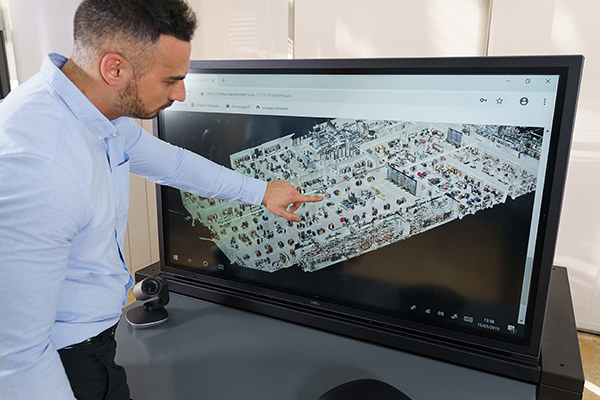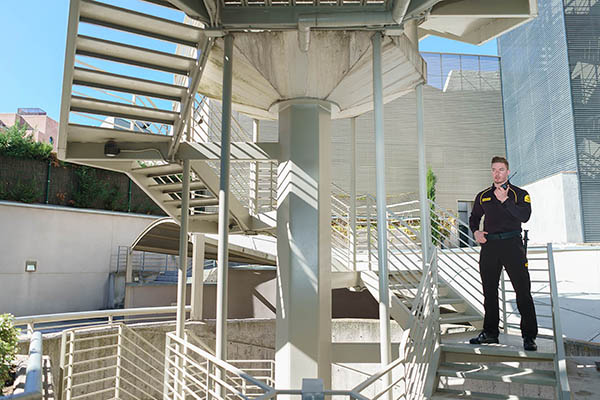Blog
The Fundamentals of Integrated Security

By David Crow
What if your security strategy is no longer enough? Security is evolving every day. What worked three years ago still works today, but there’s a way to do it better, smarter, and for less money.
By traditional security, I’m referring to how we tend to segregate our physical security into programs like manned guarding, alarms, cameras, access control and cybersecurity. The traditional approach looks at these components separately, rather than holistically. I think that’s getting outdated.
Why Traditional Security Is No Longer Enough
Going forward, I believe that security experts should invest in developing integrated security, where we look at security as a one unified program. In the medical field, there are holistic doctors who treat the body as a whole instead of just treating a symptom. If we look at a traditional security program with multiple silos, it is only treating symptoms. It’s not treating the whole body. With newer technology like analytics and even artificial intelligence, we are truly capable of securing multiple sites in a holistic manner.
Not only has there been great advancement in technology, but there’s been a huge change in the acceptance of technology across society. Think about just five years ago when we first heard about local governments putting cameras up all over the city. At the time, people were pushing back, saying, “It’s an invasion of privacy, you can’t do that.” But now look where we are today: we’re letting thermal imaging cameras measure our personal body temperature. The acceptance of technology into society and everyday life has grown, and as security experts, we should be using it more.
Technology is reliable. It doesn’t take a sick day or a vacation day, and it doesn’t get stuck in the snow. It doesn’t get infected by a pandemic! Technology can also improve the efficiency of your security program. By integrating your current security systems, from cameras to access control, into one platform, you’ll have more reliable communication across your organization. As we imagine the possibilities of integrated security, we should ask ourselves: “How do I augment my security program so that it is sustainable no matter what happens?”
The Foundation of an Integrated Security Strategy
Imagine your site has three concentric circles of security:
- The outside perimeter is the outer circle
- The parking lot is the middle circle
- The building is the inner circle
Even in traditional security, we talk about concentric circles. But ask yourself: “How does the middle circle know that someone has come through the outer circle if they’re not connected?” The holistic perspective of an integrated security approach drives an efficient movement of information. This way, the concentric circles are in constant communication, and each security tier becomes stronger as we move inward.
 How do these connected concentric circles improve your security? Picture this: An employee enters the site to go to work. How are they going through your different tiers of security? First, they must pass through the outermost circle, such as a fence line where you have guards working the gate and maybe an access control system where employees must scan the badge.
How do these connected concentric circles improve your security? Picture this: An employee enters the site to go to work. How are they going through your different tiers of security? First, they must pass through the outermost circle, such as a fence line where you have guards working the gate and maybe an access control system where employees must scan the badge.
This employee gets through that fence line legitimately then goes to find a parking spot. What’s protecting this person while they’re parking? Do you have security cameras or lights in the parking lot? Do you have a call button system, in case of an emergency? If an emergency does happen, does this call button system notify one place, or does it notify your team across all the concentric circles?
Then the employee goes to enter the building. How do they get inside? Is there access control at the building, or only at the perimeter? Are they only allowed to access certain parts of the building? With a traditional approach to security, we come across many questions about access and communication across different areas of the site. By connecting the site with an integrated security strategy, we can easily answer these questions because we have a holistic view of the entire site.
The Role of New Technology in Integrated Security
Here is one example of an integrated security approach that you’ve undoubtedly seen: the newer type of parking lot management system with lights that indicate vacant parking spaces. Not only do the lights show drivers where empty parking spots are — they also communicate information to a system that displays the number of open spaces for each level at the entrance to the parking lot. All of that technology has evolved in the last three to five years, giving different industries the ability to make a holistic system that works for our needs.
If you build an integrated security approach from the perspective of protecting your people and your assets, rather than keeping the bad guys out, you tend to build a stronger system. From there, you can think about how to use technology to augment your security.
For example, for your perimeter cameras, you can install analytics that can tell the difference between a rabbit, a squirrel or a person. They can even detect the difference between a dog lying down and a person lying down. The new generation of thermal imaging cameras is amazing: They actually see better at night than regular cameras can see during the day.
Analytics are also very affordable, so you can even build your fence line with technology instead of having a true fence, saving you money and providing you better protection. You can use this technology to protect your property as a whole, both for the employees and visitors coming in legitimately and from potential intruders.
Even in today’s pandemic era, there are many opportunities to start developing an integrated security strategy. As buildings open back up, many organizations are screening the body temperatures of both employees and visitors. Although thermal imaging cameras are not the most accurate tool, you can still use them in temperature screening rather than having someone manually take each person’s temperature. By setting temperature parameters, you can have your security officer at your lobby desk monitoring the flow of people. If someone’s temperature is outside the parameter you set, your system will alert that security officer, who can then take action and interact with this person without blocking everyone else’s access.
Adding technology to your security strategy is just that: a tool to enhance, not to replace. Just as we saw in the temperature screening example, technology gives your team actionable information so you can do more with fewer resources.
With increasing demands for security leaders to do more with shrinking budgets, an integrated security approach is an efficient and cost-effective solution that improves security and maximizes your available resources.
* * *
David Crow is the senior vice president of commercial development at Prosegur USA.
He is a dedicated practitioner of participatory leadership: leading from within and building teams that are high in engagement, client-focus, results-orientation and camaraderie.
David has over 30 years of security industry experience. Prior to joining Prosegur he held senior leadership roles at SecurAmerica, US Security Associates and The Home Depot.